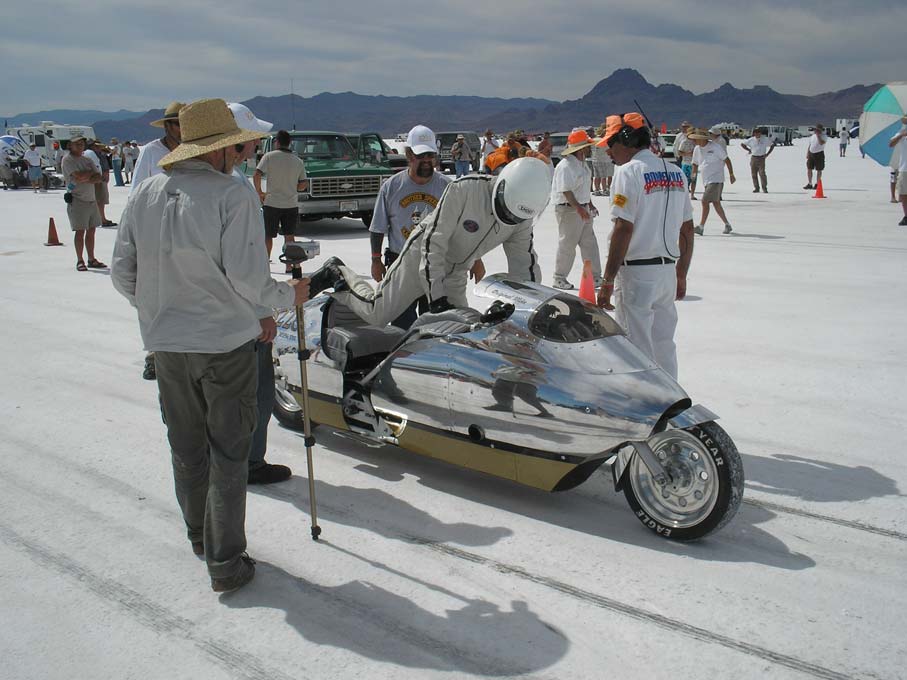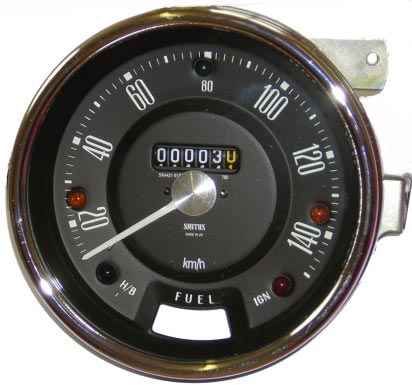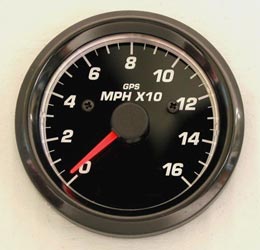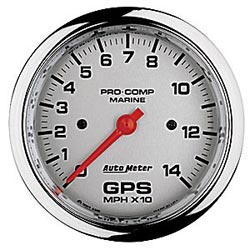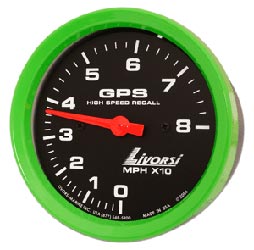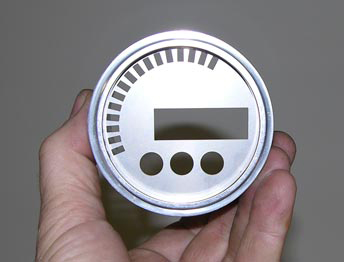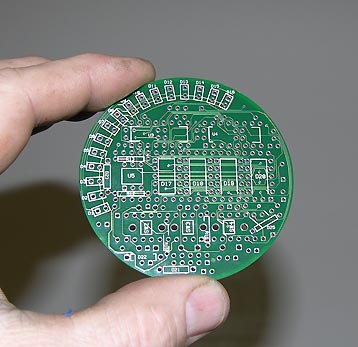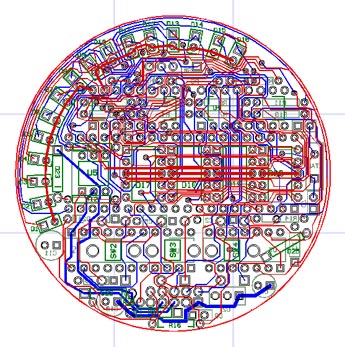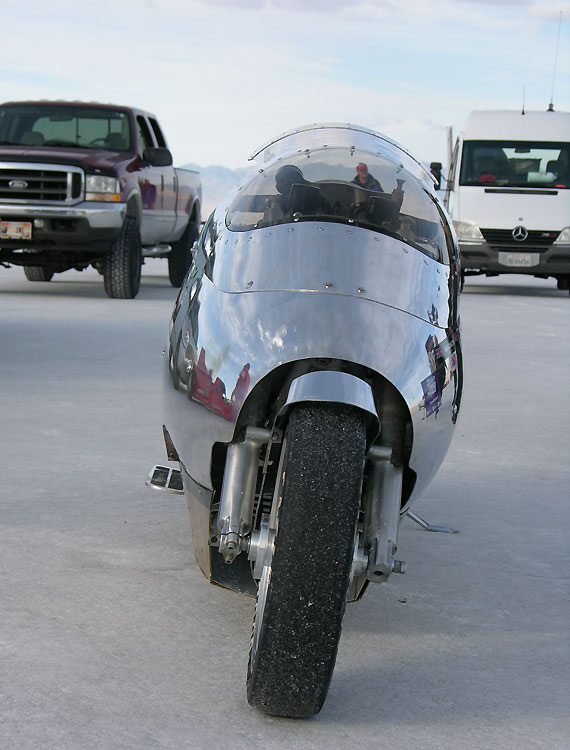
RSR ORCA GPS Speedometer
ORCA GPS Speedometer

On
Harleys the speedometer is usually driven off of the transmission. If
you spin the tire, change gear ratios, or even change tire sizes the
speedometer is no longer accurate. Then there is the issue that the
speedometers are not designed for 250 mph or even anything past 120 to
160 mph. This situation is not exactly made for Bonneville where you
are running past 200 mph, spinning the tire, searching for traction,
and putting 300 mph Goodyear Land Speed Record tires to the test.
We figured the best way out of this was to equip the Bonneville Bullett
with a GPS (Global Positioning System) speedometer. When we checked
around we found some GPS units for boats but nothing made for a 250 mph
Bonneville Harley. The only option was to make a GPS Speedometer. Four
satellites will triangulate the Bullett in three dimensional space and
Mike Geokan can have a dead accurate speedometer that never needs to be
calibrated.
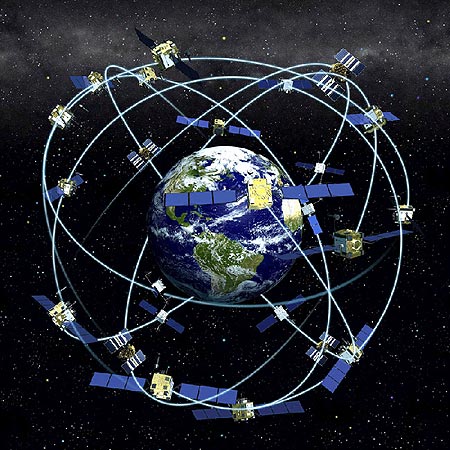
The
orbits of GPS satellites are inclined to the Earth’s equator by about
55º. The system is designed to ensure that at least four
satellites are visible at least 15° above the horizon at any given time
anywhere in the world. 200 mph, as determined by four satellites, will be the first red light just before the 12 o'clock position. High
recall, dimming and reset functions are handled by the three momentary
buttons. Pressing the blue and red buttons simultaneously will switch
the display to kilometers/hour. Switch back to MPH by pressing the same
two buttons. On powering up the display will automatically revert to
MPH.
We
selected the high resolution Garmin 18X 5Hz receiver. It reacts fast
enough to show changes between shifts. 5Hz means 5 times per second.
226 MPH sitting still

In honor or Mike Geokan's #226 Blue Bike Steve Manley of Xtal Design Labs
cranks the GPS speedo up to 226 mph. It's a lot safer as there are no
pushrods, pistons, hot gases, or sweat soaked leathers to deal with.
Steve is usually in his racing suit in his Reynard.
Steve Manley..Racer / EE
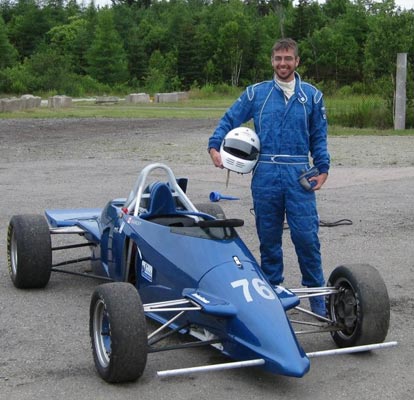

While
we know what we want, we also know when to get help in electronics and
embedded system design. Steve Manley, the principal of xdesignlabs,
has spent way too much time fooling with digital tachometers and race
car engineering issues, in-between flying around serving his growing
base of racing and industrial clients. In addition, we knew Steve had
done extensive GPS work for Industrial clients and Off Road Racing
Trucks, so we mixed our special requirements with his expertise and
came up with the Orca GPS Speedometer. We did the final circuit layout
work, machining and mechanical design and Steve provided the circuitry
and embedded code.
It
takes a racer to understand racing. We race on two wheels and he races
on four. The requirements are different but the ideas are the same.
In
Canada all open wheeled race cars are required to have snow plows.
Steve did a complete ground-up rebuild of this Reynard. You can view
the process on his website.
4 Wheel Testing
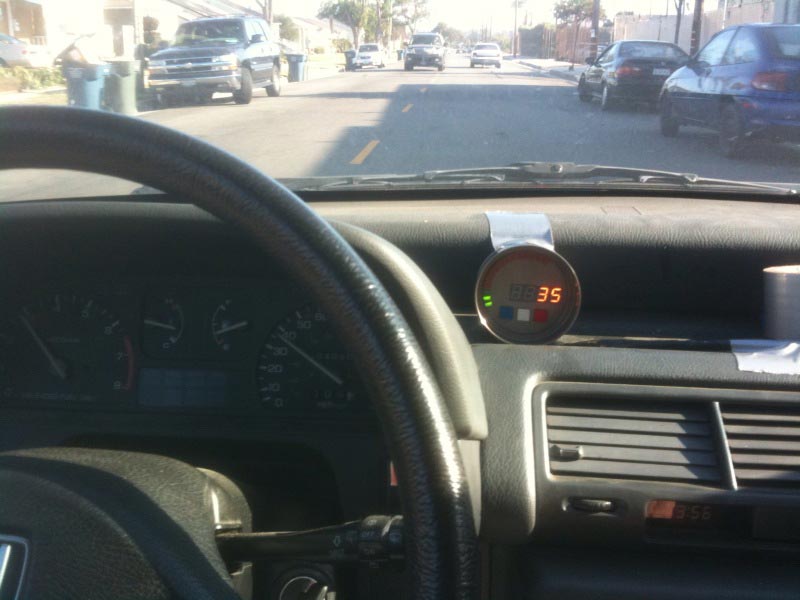
Duct
tape and four wheels...a bit easier to test than going 145 mph in
freeway traffic or 200+ mph at Bonneville. 1" machined sunshade in
housing makes display easier to see in bright sunlight. Honda speedo
reads slightly optimistic. Satellites are more accurate.
No Wheel Testing
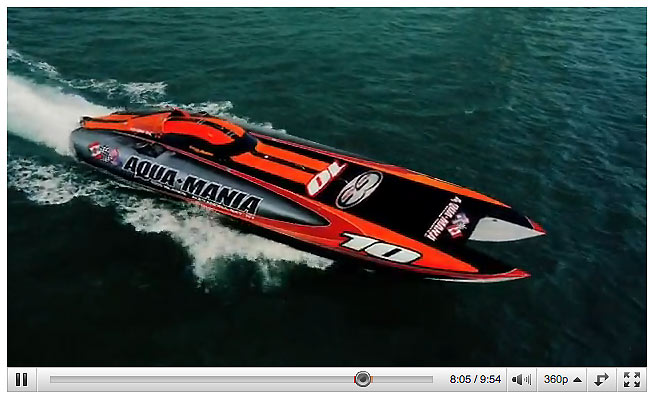
Turbine Marine Inc
asked us for a GPS Speedometer for a Twin Turbine race boat. All they
asked was that it go to 250 mph. Since our unit will easily go to 999
mph that wasn't an issue. A video
of these 200+ mph insanely expensive boats like Aqua-Mania gives you an
idea of what the wealthy do with their money. We have no idea where our
speedos end up. We think the boat guys are insane. They think sitting
on a pushrod motorcycle at the Salt Flats at 200 mph is insane. Maybe
we all are.

Most
likely their exhausts are bigger than yours. Twin Turbine engines. Some
combinations are way past 3000 hp. All we look at is all the welding on
thinwall stainless. It's not easy.
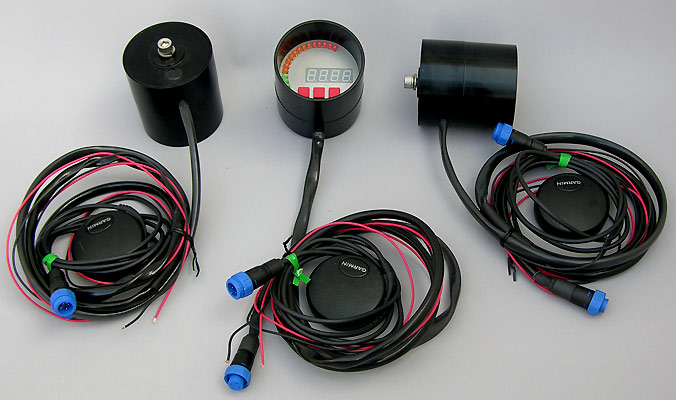
Mix
zillion dollar turbine boats, clients with money, detail freak boat
builders and you end up with hard black anodized units with red
buttons. Aerodynamic Plating does our anodizing and they have every
color under the sun, if you want to pay the minimum charge. The late
Boyd Coddington had Aerodynamic do all his billet parts like purple
steering wheels and the like. If the boat designer wants black, he gets
black. Turbine Marine Inc. IP56 watertight sealed gold-plated
connectors, hardcoat anodization, fiberglass sheathing and stainless
laser cut faceplates and stainless hardware....all to appease the Gods
of Speed.
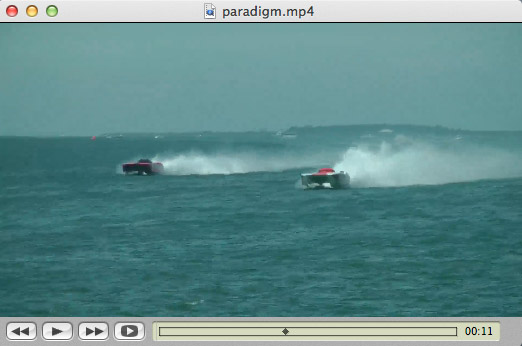
We're two wheeled people but these boat guys are completely nuts. Here's a video of Turbine Marine/Paradigm Boats in a recent race.
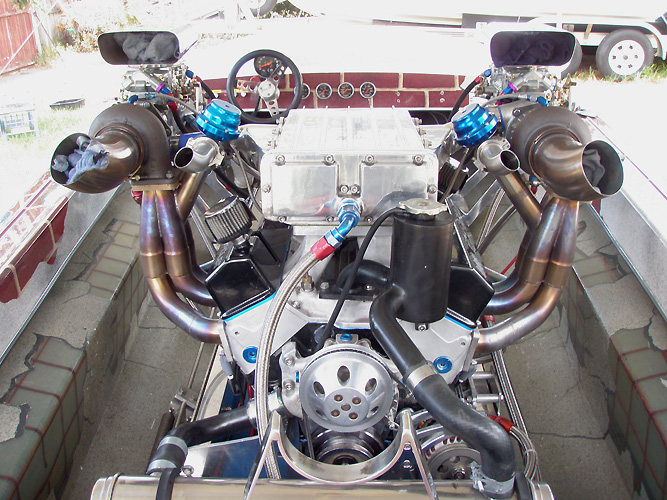
From
Down Under...Mark Busscher from MBPerformance PTY LTD. GPS Equipped.
Looks a bit insane to us. Guess too much is never enough.
Bonneville 4 Wheels...My Three Sons
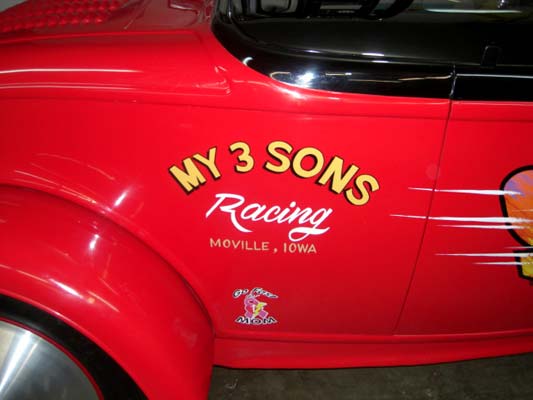

This
is what happens when you go to Bonneville as a spectator...You end up
buying a car to go racing. Of course when you get it home you get to
tear it all apart and freshen up the engine and then start thinking
about the next SpeedWeek and how you are going to get through technical
inspection and make your qualification passes.

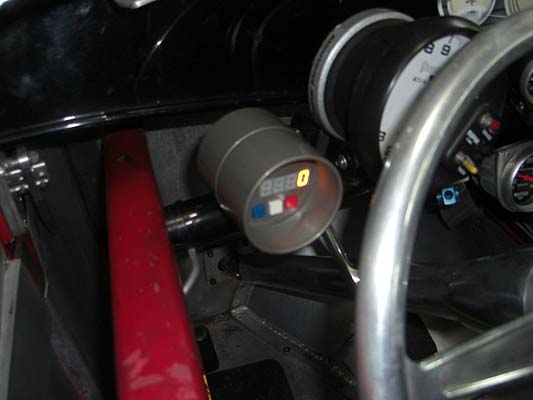
A
GPS speedometer will allow you to hit your mph targets without worrying
about wheel slip. The class record may be tough, but the journey is
worth it even if you "only" get through the qualifying and licensing
passes. Bonneville is a long term game often dictated by the weather.
If you can take your sons along to experience the Great White Dyno then
it's all worth it. It's a stark and brutal but often a beautiful place
where many have gone before you.
Bonneville...#932
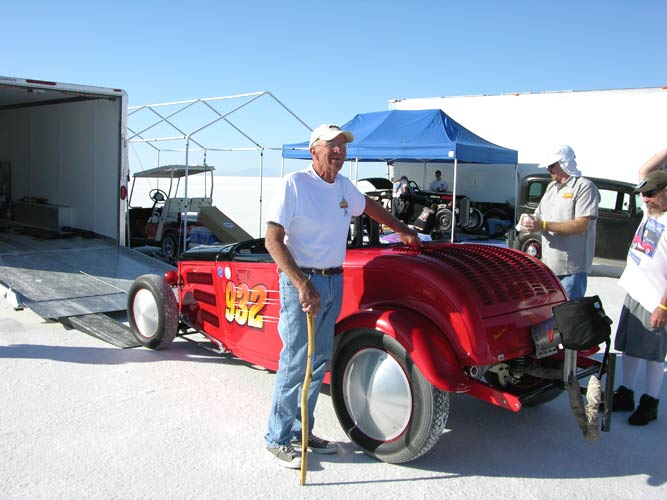
My
Three Sons at Bonneville. They had a sucessful event i.e. getting to
the Salt Flats, getting though inspection, and making some test runs
down the track. Next stop is looking for a 200 mph club record. Go once
and you automatically find a reason to return. Weather can be a factor
but the Salt Bear Gods were smiling this time.
Bonneville Racing... 2 Wheels
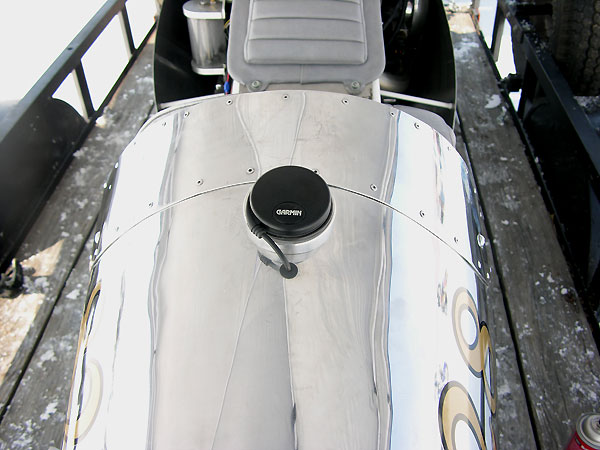
The
Garmin OEM 18x 5Hz receiver is mounted on the Bullett's tail section.
We machined a cup that bolts to the tail and siliconed the receiver
into the upper recess. The shielded cable passes through a plastic
grommet. Looks like a filler cap until you read the Garmin logo. Having
an onboard GPS Speedometer is essential at Bonneville where wheel slip
is always present. To hit your target licensing pass speeds of 150/175
and 200 mph it is critical. We ran 145, 163 and 191 at the World Finals. The speedo is fast enough to see changes during shifts.
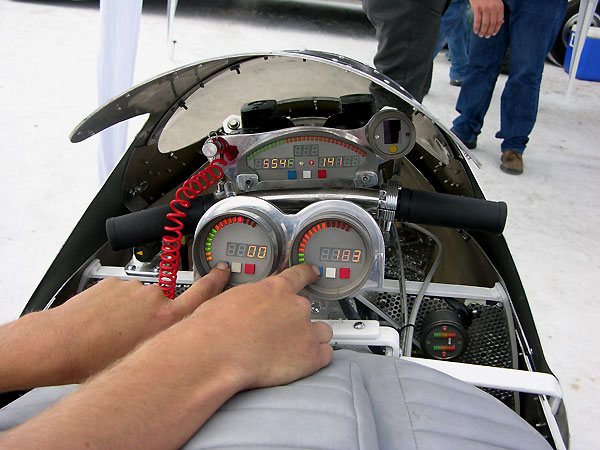
A third gear test pass at Bonneville. 183 mph on the Orca GPS Speedometer.
Situations Define the Problem
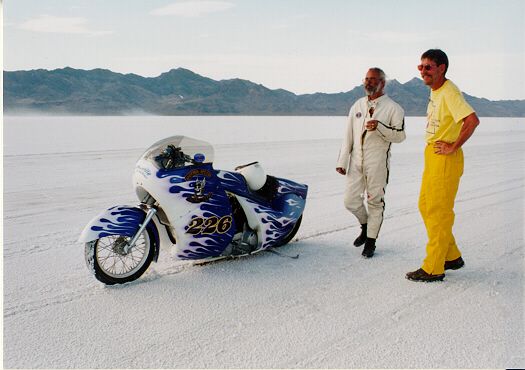
When we started building really high horsepower Bonneville bikes, like our early GSXR Suzukis and our Harleys with ORCA
turbo engines, we always had to wait for the timing slips to see how
fast we had gone. If we had a mechanical speedo hooked up to the
transmission it would just gyrate with the wheelspin...Anyway, it
wasn't calibrated for anything over 160 mph!
The
best traction control device is the rider's skill and the best feedback
mechanism is the GPS Speedometer. Do whatever it takes to make the GPS
number go higher.
We
tested round buttons and square buttons and settled on the larger
square buttons. We tested various L.E.D.s and variances in computer
code relative to rider interface issues.
State
of the art four layer circuit board with military grade componets.
Ultra-reliable close tolerance though-hole components. Reverse polarity
protected with optically-isolated circuits. Over-voltage and surge
protection. Fully encapsulated electronics. The RSR ORCA GPS
Speedometer will survive harsh environments. If we had to do it again
we'd do a six layer board.
Billet
enclosure with a laser cut stainless steel face plate. Back of
enclosure serves as a heat sink for the electronic components. Running
16 L.E.D.s and four digits at full tilt brightness to be visible in
sunlight generates heat. Center back mount is supplied with a 90 degree
stainless steel bracket that can be adapted to various mounting
points...or you do your own thing.
RSR ORCA GPS Speedometer...Designed By Racers

We have over 30 years of involvement on two wheeled racing, everything from 24 Hour Endurance,
to road racing, to drag racing, as well as our well-known Bonneville
speed efforts. There wasn’t a GPS Speedometer that suited our purposes
so we made one. It’s more of a question of building what we need to do
our job. For others its simply building some useless custom billet part
for an equally useless custom bike or someone selling you an automotive
speedo adapted for motorcyles.
FXR Test Vehicle
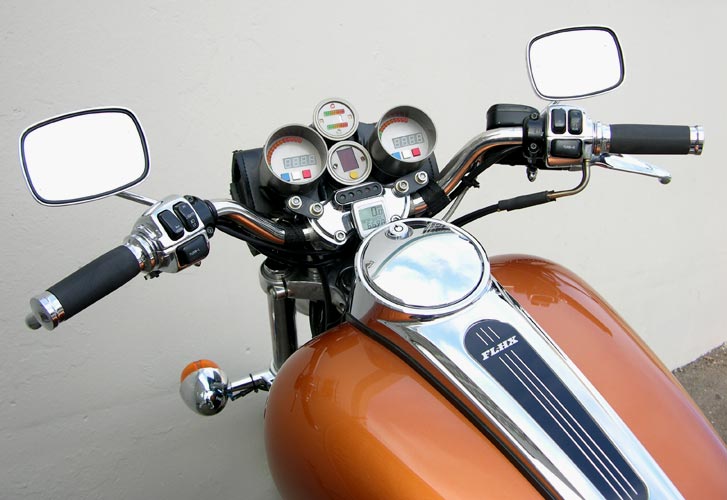
We
like FXRs and we instrumented ours with our digital Tachometer, GPS
Speedometer, Dual O2 Gauge and Gear Indicator. No it's not a FLHX. It
started out as a 1999 FXR CVO2 that we put on a 5 gallon FL tank and
got rid of the solid rear wheel and the 21" front wheel. We also
convereted it to chain drive and put on a Hayabusa steering damper and
one ot our LSR 2-1 1 3/4" B Style turn out exhausts. We also fuel
injected it with one of our closed-loop RSR Injection Systems.
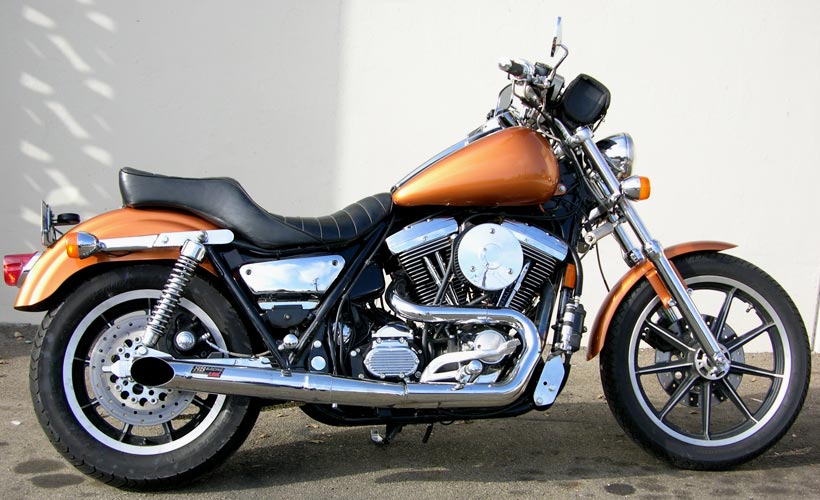
We
had Jim's Cycle painting put on a simple one color scheme as the cops
seemed to be attracted to our blue tank, yellow rear fender and purple
front fender. Clown bike. Painters are weird. We just left the color up
to Jim. He painted Seven time F1 Champion Michael Schumacher's Bobber
Harley so he's pretty decent. He's still weird. Jims works by
appointment only 1-310 329 4707.
Final Version...KPH or MPH, user selectable

We
tested all sorts of combinations of lights, silkscreens and color
schemes and this is the final product. It is a hard anodized billet
enclosure with a laser cut stainless steel faceplate that has been
optimized for l.e.d. brightness and has a textured and coated surface
to prevent unwanted reflections.
It is the world's best GPS Speedometer that is unaffected by wheelspin, changes in transmissions, or sprockets.
Sixteen L.E.D. colored lights with the magic 200mph just before 12 O'Clock position in the first red light.
The
final scheme of the 16 lights after extensive testing was three green,
nine orange, and five red l.e.d.s. The lights sweep in a bargraph mode
i.e. they remain lighted if that threshold has been met.
|
LED Color
|
MPH Begin
|
MPH End
|
|
Green
|
16.667
|
33.333
|
|
Green
|
33.333
|
50.000
|
|
Green
|
50.000
|
67.667
|
|
Orange
|
67.667
|
83.333
|
|
Orange
|
83.333
|
100.000
|
|
Orange
|
100.000
|
116.667
|
|
Orange
|
116.667
|
133.333
|
|
Orange
|
133.333
|
150.000
|
|
Orange
|
150.000
|
166.667
|
|
Orange
|
166.667
|
183.333
|
|
Orange
|
183.333
|
200.000
|
|
Red
|
200.000
|
216.667
|
|
Red
|
216.667
|
233.333
|
|
Red
|
233.333
|
250.000
|
|
Red
|
250.000
|
266.667
|
|
Red
|
266.667
|
283.333
|
The
first red light is just before the 12 O'Clock position which indicates
200.000 mph has been reached. The display lights remain in the green
below 67.667 mph after which they go into the orange lights (watch for
cops). The four digit digital display gives the exact mph readout
updated at 5 Hz. If you hold the Blue and Red buttons down
simultaneously when the display is powered up it will switch to
kilometers (kph) or vice versa.. The display will remember the last
setting i.e. KPH or MPH.
Once
the display is powered down it will revert to MPH when restarted. On
startup it will locate the satellites: "Conn" will be displayed as it
connects and "Loc" when it locks on. After that it will display a zero
"0" until you get moving".

Blue
button is high recall for both sweep and digit scales. White button is
brightness select for daylight or nightime. Red button is reset, or
zeroing, of the high memory recall. Buttons are high force and are
easily operated with gloves. Billet case has a
machined sunshade 1" deep to insure visibility in bright sunlight
conditions. If you want bright go to Bonneville where you are under
blinding sun and a white ocean of salt. It's been tested there.
Sheathed wiring harness comes out the center bottom.
















